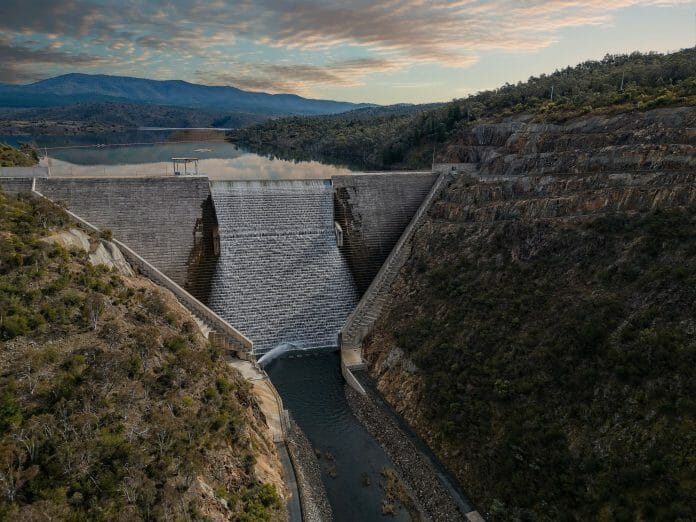Electricity is a necessity that everyone uses every day. But do we ever think about where the electricity source comes from beyond the simple click of the ‘ON’ switch? Conventional electricity generation of producing electricity includes thermal power plants that generate electricity by burning fossil fuels such as coal, natural gas, or oil, and nuclear power plants that produce electricity through nuclear fission reactions. However, there is an increasing shift towards renewable energy sources due to concerns about climate change, pollution, and the limited availability of fossil fuels. Currently wind, solar, hydrogen, and hydro are renewable sources for power generation and the growing global demand for clean and renewable energy sources has led to a surge in innovative methods for power generation. One new alternative is harnessing energy from dam spillways, which can potentially provide a sustainable and reliable source of electricity by capitulating the existing hydropower and dam system.
Spillways, commonly found in dams and reservoirs, are traditionally constructed with an overflow section that allows the excess water to flow downstream, which is why they are used to control the release of excess water during periods of heavy rainfall or flooding.
The energy harnessing process from spillways involves controlling the flow of water, allowing for better regulation of water resources. By optimizing water release rates and managing reservoir levels more effectively, spillways can contribute to improved flood control, irrigation, and water supply management. This indirectly enhances water management. Remarkably, this excess water possesses significant kinetic energy, which can be harnessed through various methods to generate electricity. One of the chute spillways in Malaysia can produce up to 30 m/s of water velocity during the maximum release of water and it shows vast potential to harness energy from it. One possible method is the use of turbines placed within the spillway to capture the kinetic energy of the flowing water. As water passes through the turbines, it causes the turbines to rotate, subsequently converting the kinetic energy to mechanical energy that can, in turn, be converted into electrical energy using generators. This process involves controlling the flow of water, allowing for better regulation of water resources. By optimizing water release rates and managing reservoir levels more effectively, spillways can contribute to improved flood control, irrigation, and water supply management. Contrary to traditional fossil fuel-based power generation, harnessing energy from spillways is entirely renewable and environmentally friendly. It relies on the natural flow of water, making it an abundant and sustainable energy source. Additionally, it emits less greenhouse gases, aiding in the worldwide battle to halt climate change. The infrastructure synergy also benefits from using spillways to harness energy. The requirement for additional space and resources is reduced by embedding energy-generating equipment inside the spillway infrastructure already in place. This integration of power generation capabilities with water management structures optimizes the use of space and resources, making it a cost-effective solution.
While harnessing energy from spillways presents numerous benefits, Economically, the initial cost of implementing energy-harnessing systems in existing spillways can be a significant barrier. However, with advancements in technology and economies of scale, installation, and maintenance costs are anticipated to decrease over time. Government incentives and public-private collaborations can also play a crucial role in making these projects economically viable. Any modification to natural waterways could also potentially impact the local ecosystem. Environmental impact analyses and mitigation measures must be carefully considered to lessen these effects. Designing fish passageways and preserving the natural harmony in the downstream region are crucial components of spillway energy projects that are sustainable. Designing efficient turbines that can withstand the forces and erratic flow patterns of spillways remains a technical challenge in engineering. In-depth, research and development are essential to produce turbines that maximize energy conversion while minimizing maintenance requirements.
In a nutshell, harnessing energy from spillways presents an innovative and sustainable strategy for power generation. Spillways have the potential to make a significant contribution to global efforts to address climate change and lessen dependency on fossil fuels by converting current water control infrastructure into renewable energy sources. While there are obstacles including turbine design, environmental effect, and economic feasibility, these can be addressed with the use of technology, smart planning, and stakeholder cooperation. By embracing this solution, we can pave the way for a greener and more energy-independent future.
By Ts. Dr. Mohd Hafiz Zawawi
The author is the Head of Civil Engineering Department and Associate Member in Institute of Energy Infrastructure, Universiti Tenaga Nasional (UNITEN), and may be reached at [email protected]









